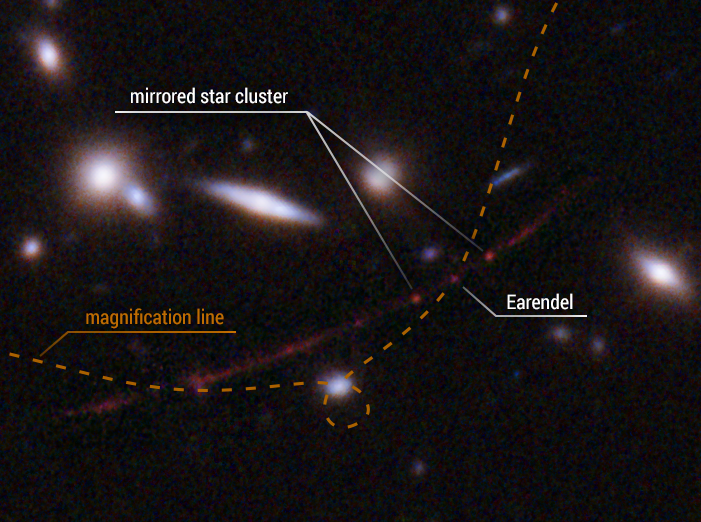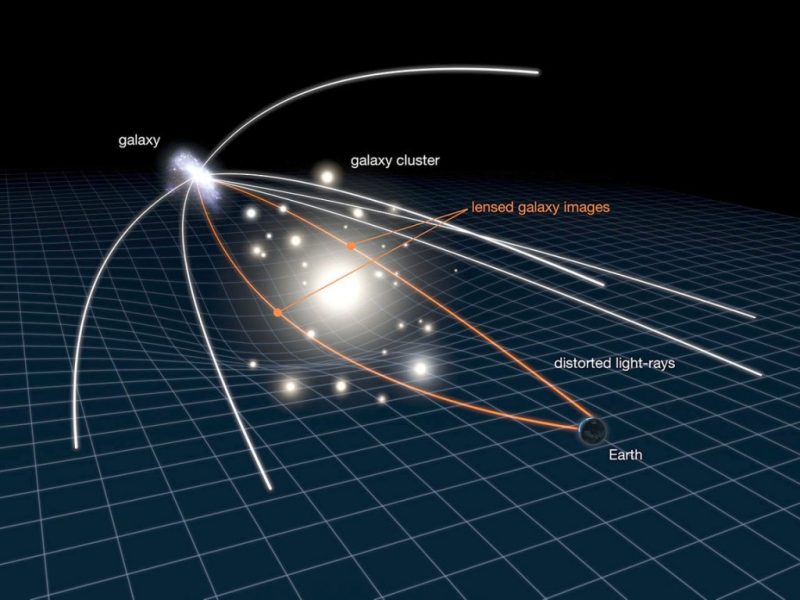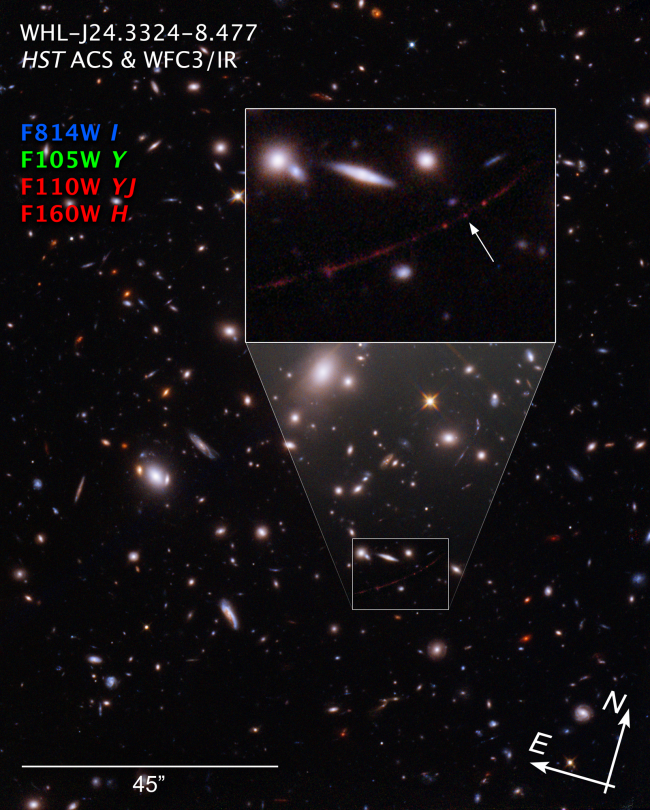
Most distant star yet
The venerable Hubble Space Telescope has widened humanity’s perspective on the cosmos yet again, this time revealing the most distant – and therefore oldest – individual star ever seen. This star formed in the juvenile universe just 900 million years after the Big Bang. Astronomers have nicknamed it Earendel, a tribute to English fantasy author J.R.R. Tolkien, as well as the European mythology he drew upon for his stories of Middle Earth. Astronomers announced the landmark discovery during a highly anticipated virtual press conference by NASA, held Wednesday, March 30, 2022.
Earendel’s discovery isn’t just a record-breaking technological achievement, these scientists said. It also presents a unique opportunity for astronomers and cosmologists to study conditions of the early universe and the composition of objects that emerged during that era.
Far-sighted observation reveals early cosmos
Astronomer Brian Welch of John Hopkins University is lead author of the research paper that revealed the discovery of WHL0137-LS (Earendel’s less poetic official designation). He said he expects that further study of the farthest star from Earth will likely lead to a new and deeper understanding of the features of the cosmos at a point in time when it was radically unlike what we see in the modern era. In an interview Welch said:
I think the most interesting thing is that it’s looking back to a time when the universe was much different than what it is today. So what we’ve seen of galaxies at this early time, we can tell that they’re structured very differently and that they look quite a bit different than galaxies that we see nearby, for example the Milky Way and our nearest neighbor Andromeda.
So Welch and other members of the team that found Earendel are hopeful their discovery will teach us more about stellar evolution in the ancient universe, as well as revealing the properties of ancient primordial celestial bodies. It stands to reason that stars at such a great distance will look a little bit different, too.

Hubble and Webb will join forces
What exactly the farthest star will reveal to astronomers is a complete unknown, as this is the first time anyone has imaged an object like Earendel. The data leading to the star’s discovery represents approximately 3 1/2 years of observations. Welch explained:
So we just haven’t had the opportunity to really study one in detail yet. And I think what I’m most interested in – and what I’m most excited by – is the fact that we now have an opportunity to really pinpoint one object and look at it in detail.
That detail will be enhanced when Hubble makes coincidental observations of Earendel along with the newly launched James Webb Space Telescope. Together, the instruments will capture a broader spectrum of light than either scope could alone. Welch said:
Yeah, Hubble and Webb are very complementary. So Hubble obviously gets the shorter wavelengths of light (the visible portion of the spectrum), and Webb is able to target longer wavelengths (infrared light). And when you combine those, you get a much broader understanding of whatever objects we’re looking at.

The science happened when galaxies aligned
Normally, the HST would not have the resolution necessary to capture such a dim and distant object as Earendel. But astronomers were aided in their observations by gravitational lensing, the bending of a photon’s pathway by a massive object it encounters during travel between its origin and an observer. These events are very rare, meaning Welch and company got lucky, as they revealed in their paper titled A Highly Magnified Star at Redshift 6.2.
[Our observing program imaged] of a total of 41 lensing clusters. Included in these observations was a 15″–long lensed arc of a galaxy … nicknamed the Sunrise Arc.
This Sunrise Arc, as astronomers call it, is known to be exceedingly distant. The astronomers spotted Earendel within the Sunrise Arc, “sitting atop the lensing critical curve,” they said, at a point where the structure of the universe is accidentally directing the star’s light in our direction. Welch explained:
And in doing so, just like looking through a glass lens, it focuses the light onto our telescope. And in this case, we get just the right alignment with the lens and with the star in the background that we get really, really high magnification.

Bottom line: Astronomers have found the most distant star yet, thanks to rare alignment with a lensing galaxy cluster. They’ve nicknamed the star Earendel. This star formed in the juvenile universe just 900 million years after the Big Bang.











